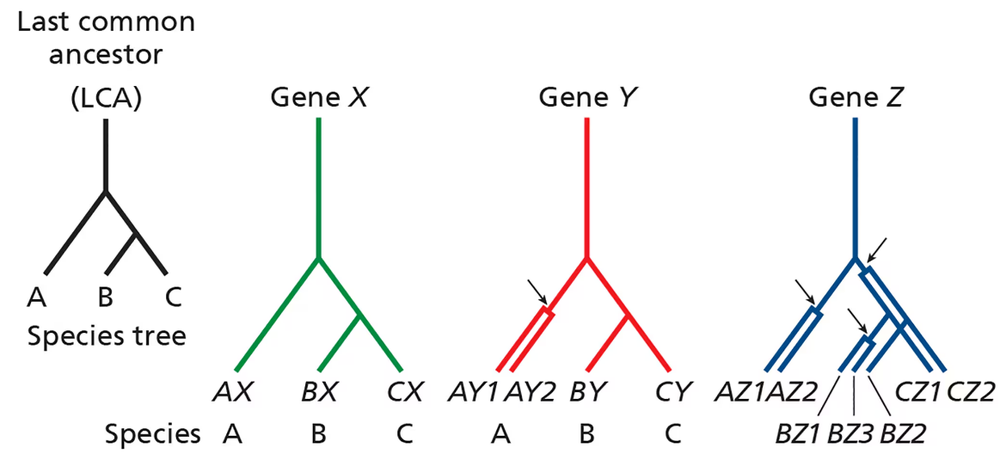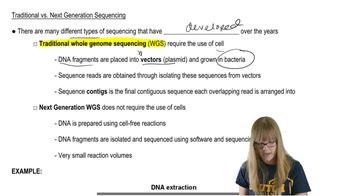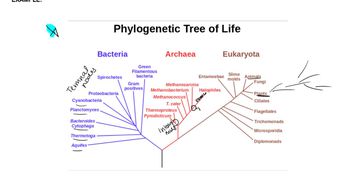Annotation involves identifying genes and gene-regulatory sequences in a genome. List and describe characteristics of a genome that are hallmarks for identifying genes in an unknown sequence. What characteristics would you look for in a bacterial genome? A eukaryotic genome?
Table of contents
- 1. Introduction to Genetics51m
- 2. Mendel's Laws of Inheritance3h 37m
- 3. Extensions to Mendelian Inheritance2h 41m
- 4. Genetic Mapping and Linkage2h 28m
- 5. Genetics of Bacteria and Viruses1h 21m
- 6. Chromosomal Variation1h 48m
- 7. DNA and Chromosome Structure56m
- 8. DNA Replication1h 10m
- 9. Mitosis and Meiosis1h 34m
- 10. Transcription1h 0m
- 11. Translation58m
- 12. Gene Regulation in Prokaryotes1h 19m
- 13. Gene Regulation in Eukaryotes44m
- 14. Genetic Control of Development44m
- 15. Genomes and Genomics1h 50m
- 16. Transposable Elements47m
- 17. Mutation, Repair, and Recombination1h 6m
- 18. Molecular Genetic Tools19m
- 19. Cancer Genetics29m
- 20. Quantitative Genetics1h 26m
- 21. Population Genetics50m
- 22. Evolutionary Genetics29m
15. Genomes and Genomics
Comparative Genomics
Problem 16b
Textbook Question
Consider the phylogenetic trees below pertaining to three related species (A, B, and C) that share a common ancestor (last common ancestor, or LCA). The lineage leading to species A diverges before the divergence of species B and C.
For gene Y, a gene duplication occurred in the lineage leading to A after it diverged from that, leading to B and C. Are genes AY1 and AY2 orthologous or paralogous? Are genes AY1 and BY orthologous or paralogous? Are genes BY and CY orthologous or paralogous?

 Verified step by step guidance
Verified step by step guidance1
Understand the definitions of orthologous and paralogous genes: Orthologous genes are genes in different species that evolved from a common ancestral gene through speciation. Paralogs, on the other hand, are genes related by duplication within a genome.
Analyze the relationship between AY1 and AY2: Since the problem states that a gene duplication occurred in the lineage leading to species A after it diverged from the lineage leading to species B and C, AY1 and AY2 are paralogous because they arose from a duplication event within the same species (species A).
Examine the relationship between AY1 and BY: AY1 and BY are orthologous because they are genes in different species (A and B) that evolved from a common ancestral gene through speciation, not duplication.
Determine the relationship between BY and CY: BY and CY are orthologous because they are genes in different species (B and C) that evolved from a common ancestral gene through speciation.
Summarize the relationships: AY1 and AY2 are paralogous, AY1 and BY are orthologous, and BY and CY are orthologous. This classification is based on the evolutionary events of gene duplication and speciation described in the problem.
 Verified video answer for a similar problem:
Verified video answer for a similar problem:This video solution was recommended by our tutors as helpful for the problem above
Video duration:
2mPlay a video:
Was this helpful?
Key Concepts
Here are the essential concepts you must grasp in order to answer the question correctly.
Orthologs vs. Paralogs
Orthologs are genes in different species that evolved from a common ancestral gene through speciation, while paralogs are genes that arise from gene duplication within the same species. Understanding this distinction is crucial for analyzing gene relationships in phylogenetic trees, as it helps determine the evolutionary history and functional divergence of genes.
Recommended video:
Guided course

Traditional vs. Next-Gen
Gene Duplication
Gene duplication is a process where a segment of DNA is copied, resulting in two or more copies of a gene within the genome. This can lead to the formation of paralogs, as the duplicated genes may evolve new functions or retain similar functions over time. In the context of the question, the duplication in the lineage leading to species A is key to identifying the relationships between AY1, AY2, and other genes.
Recommended video:
Guided course

Duplications
Phylogenetic Trees
Phylogenetic trees are diagrams that represent the evolutionary relationships among various species based on their genetic information. They illustrate how species diverged from common ancestors and help visualize the lineage of genes. Analyzing these trees is essential for determining whether genes are orthologous or paralogous, as the tree structure provides insights into the timing and nature of gene divergences.
Recommended video:
Guided course

Phylogenetic Trees
Related Videos
Related Practice
Textbook Question
727
views


